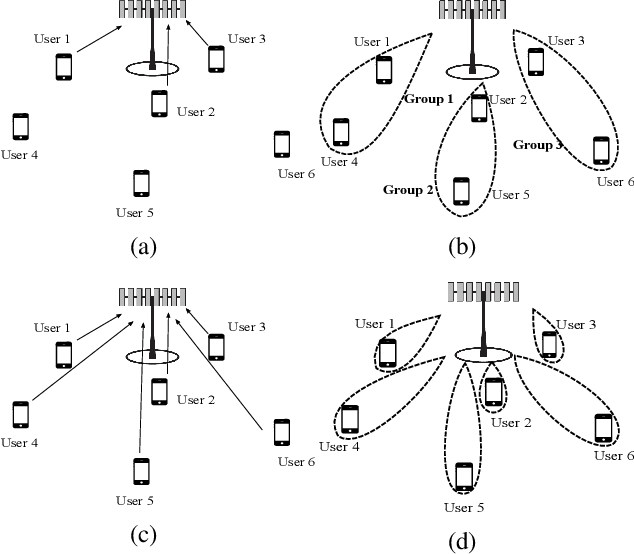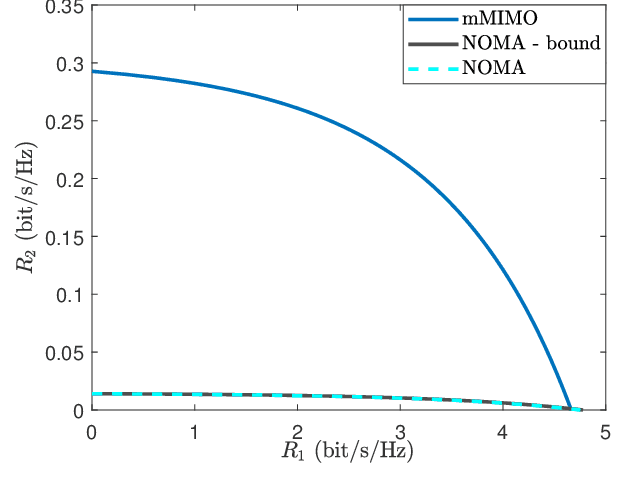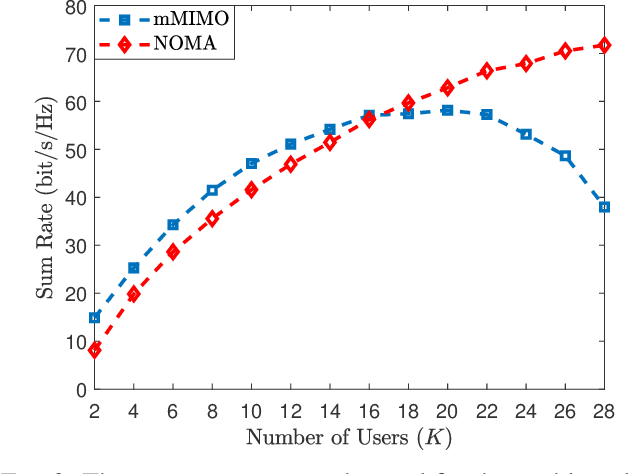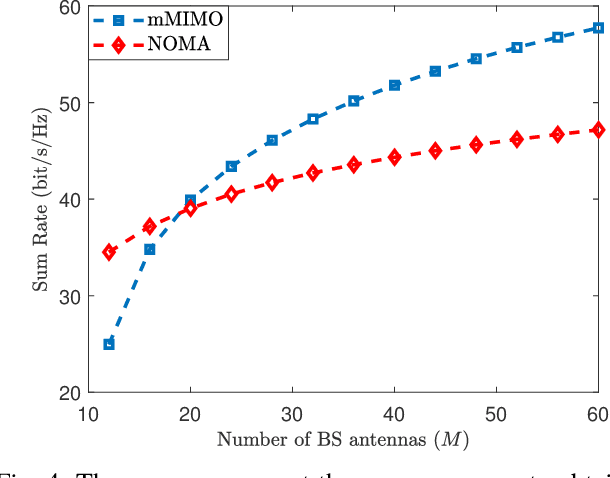Kamil Senel
NOMA Versus Massive MIMO in Rayleigh Fading
Dec 31, 2021



Abstract:This paper compares the sum rates and rate regions achieved by power-domain NOMA (non-orthogonal multiple access) and standard massive MIMO (multiple-input multiple-output) techniques. We prove analytically that massive MIMO always outperforms NOMA in i.i.d.~Rayleigh fading channels, if a sufficient number of antennas are used at the base stations. The simulation results show that the crossing point occurs already when having 20-30 antennas, which is far less than what is considered for the next generation cellular networks.
Human and Machine Type Communications can Coexist in Uplink Massive MIMO Systems
Dec 31, 2021



Abstract:Future cellular networks are expected to support new communication paradigms such as machine-type communication (MTC) services along with human-type communication (HTC) services. This requires base stations to serve a large number of devices in relatively short channel coherence intervals which renders allocation of orthogonal pilot sequence per-device approaches impractical. Furthermore, the stringent power constraints, place-and-play type connectivity and various data rate requirements of MTC devices make it impossible for the traditional cellular architecture to accommodate MTC and HTC services together. Massive multiple-input-multiple-output (MaMIMO) technology has the potential to allow the coexistence of HTC and MTC services, thanks to its inherent spatial multiplexing properties and low transmission power requirements. In this work, we investigate the performance of a single cell under a shared physical channel assumption for MTC and HTC services and propose a novel scheme for sharing the time-frequency resources. The analysis reveals that MaMIMO can significantly enhance the performance of such a setup and allow the inclusion of MTC services into the cellular networks without requiring additional resources.
 Add to Chrome
Add to Chrome Add to Firefox
Add to Firefox Add to Edge
Add to Edge